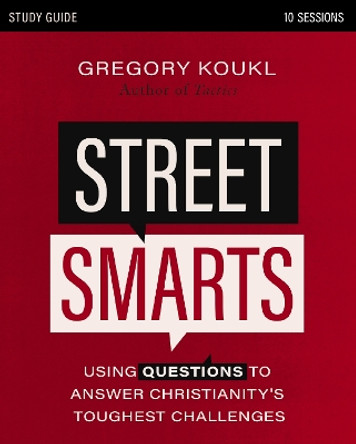Description
This book gives simple yet rigorous answers to hundreds of astronomical questions, for anyone who has ever wondered about the cosmos.
About the Author
Carol Christian is a scientist at the Space Telescope Science Institute (STScI), Baltimore. She is the Hubble Space Telescope Outreach Project Scientist, supporting the Hubble Space Telescope mission in all things regarding information for the media, educators and the general public. She also is a co-host of the Hubble Hangouts series held weekly and participates in a number of podcasts on iTunes. In previous years she was the Head of the Office of Public Outreach at STScI and established a number of internet educational and outreach initiatives. Jean-Rene Roy is a retired astronomer who was professor at Universite Laval, Quebec from 1977 to 2000. Since then he has served as Deputy Director and Head of Science at the Gemini Observatory in Hawai'i and Chile, worked at the Large Facilities Office of the US National Science Foundation and finally at the Space Telescope Science Institute, Baltimore. He has carried out research on the Sun, the interstellar medium, and the evolution of gas-rich galaxies.
Reviews
Review of previous edition: 'The authors tackle an amazing range of questions, each explanation generally no more than a page and most illustrated with at least one four-color image, chart, or graph to enhance understanding. Regardless of how advanced you consider yourself in astronomy or science in general, I don't doubt you will find this effort intriguing and highly thought provoking - and that you'll probably need to reread one or more entries at least twice to digest the full scope of the information presented. Because each answer also offers a reference to a related entry when necessary, it's easy to skip and skim among questions, hitting those you find most interesting or intriguing before working through the rest of the book. I think this work should reside on every astronomy enthusiast's bookshelf; it will certainly sit on mine.' Chris Raymond, Astronomy
Review of previous edition: 'Normally, I would pass quickly by a book that purports to answer 250 questions about astronomy in 263 pages. Instead of glib superficial answers at an elementary level, however, these authors bring their expertise (astrophysics, engineering, and public outreach) to bear on giving clear, concise answers that reflect the best understanding of subjects as diverse as the history of astronomy, cosmology, and the potential for life in environments beyond the Earth. ... It is likely that even professional astronomers will discover some interesting new facts. ... This book would be extremely useful for teachers who are looking for quick, clear, and authoritative answers for pre-college students, for professors teaching introductory college astronomy and who need analogies and other ways to explain complex topics such as dark energy and even string theory, and for parents who may be challenged by their children's curiosity about the night sky and all things astronomical.' Sidney Wolff, Astronomy Education Review
Review of previous edition: 'This delightful little volume is written as though the authors loved their subject too much to write it as a textbook. While it's aimed at students and those wishing for a well-rounded coverage, it's full of lovely quirky extras ... topics include a great deal on the planets, the Earth, the Universe, practical astronomy, history, and awkward questions such as astronomy in the Bible, UFOs, and aliens. ... There are plenty of footnotes, tables, diagrams, and beautiful photographs. The authors have prepared for different levels of knowledge in their audience, though they seem to assume familiarity and ease with equations. But it's a very human book. It has some inside stories, such as exactly what Fred Hoyle said when he coined the term 'big bang' ... I would recommend this book whether you know a lot or a little: it is full of memorable snippets, clear and satisfying reasoning, and enough facts to keep you entertained for a very long time.' Alice Sheppard, Astronomy Now
Review of previous edition: 'The fact that the authors are, respectively, an engineer specialising in telescope design, an astrophysicist, and a senior scientist at the Gemini Observatory, ensures that the underlying principles of astronomy are solidly covered, while the contents of the cosmos and our methods of exploring it are not neglected. Can enthusiasts, perhaps new to astronomy, resist a guide that tells them how to go about finding their own meteorite collection; explains string theory for the uninformed; discusses light pollution and its depredations; and tells them what to do if they discover something 'new' in the sky above? An excellent bibliography and website list complete a very interesting book that ought to have a place on the shelves of astronomers, whatever their level of acquaintance with the noble science.' Bob Mizon, Journal of the British Astronomical Association
Review of previous edition: '... a kind of 'cheat's guide', a 'bluff your way into being an expert' book on every aspect of astronomy and astrophysics, in the form of questions and answers which, although chosen by the authors, are very typical ... I found the book thoroughly worthwhile - I learned a lot, was reminded of much and never felt patronised, although it covered some very basic material. Everything is backed up with references for those wanting to take things further, and the authors do a good job of making clear the limits of knowledge - no-one will leave the book with the impression that cosmology is a closed subject, but they will be certain about many of the wonders of the Earth and everything around it.' Ken Zetie, Contemporary Physics
'This book includes thorough, well-written answers to 244 questions that cover just about all aspects of astronomy. The answers are not over-simplified and will be most appreciated by readers who want a certain level of sophistication and detail. Additionally, there is material that many professional astronomers may not be familiar with, such as astrophysicist McKellar's 1940 discovery that interstellar cyanogen was at a temperature of about 2.4 K; a precursor to the well-known 1948 prediction by Alpher and Gamow that there should be greatly redshifted relic radiation with a black body temperature of about 5 K remaining from the hot, dense early universe; and the 1964 discovery by Penzias and Wilson of the cosmic microwave background radiation... A helpful list of references is included. This work is recommended for undergraduates and those individuals with personal collections in astronomy.' R. R. Erickson, Choice
'... all the [astronomy] questions the readers might have but do not know who to ask other than Google are here. For example, almost everyone knows what the North Star is but is there the southern equivalent? ... Or do the readers ever wonder how big the biggest star is? ... Or how about going faster than light, can we do that? ... There are many more interesting facts that can be learned from this book. Some of the explanations are a bit technical but nothing that amateur astronomers cannot handle ... For readers who have just signed up for beginner astronomy class, it is well-suited as an introductory text, while instructors can use it as a look-up for those annoying questions students always ask.' B. Ishak, Contemporary Physics
'This is a reference book for astronomy and provides an amazingly wide range of information from 'How are stars named?' to the 'Solar System', 'Stars', 'Universe', and 'Life', to 'Which telescope should you choose?'. ... In general, I am not a fan of being given information in a Q and A format - how do you know exactly what to ask and how do you find it in the book? - so it is essential that the index works well. This book passes that test and does work as a reference text with a sizeable bibliography attached. Also, there is good cross-referencing within each answer to other connected answers. Each answer also has at least one illustration - photographs, diagrams, graphs, and artists' impressions are all used - and these add positively to interest and understanding.' Debra Holton, The Observatory
'This book does what it says on the tin. It consists of 244 questions and answers in eight sections ... followed by a useful table of unit conversion and basic physical and astronomical measurements, references, an excellent bibliography and a good index. ... There are some witty and entertaining comments ... The authors really do seem to have thought of every question an intelligent enquirer might ask, and the book is far more comprehensive than I can possibly do justice to here. As well as concrete matters, there is also discussion of wider topics such as the anthropic principle. The point is made that astronomy is the only science to which amateurs can make significant contributions, and excellent and comprehensive advice is given on how to get involved.' Ray Ward, Reference Reviews
Book Information
ISBN 9781316615263
Author Carol Christian
Format Paperback
Page Count 358
Imprint Cambridge University Press
Publisher Cambridge University Press
Weight(grams) 730g
Dimensions(mm) 248mm * 175mm * 18mm








![The New Cosmos: Answering Astronomy's Big Questions by David J. Eicher 9781107068858 [USED COPY] The New Cosmos: Answering Astronomy's Big Questions by David J. Eicher 9781107068858 [USED COPY]](https://cdn11.bigcommerce.com/s-zkx5lhzlf8/images/stencil/444x444/products/5842229/5919295/9781107068858__18358.1727577841.jpg?c=1)
